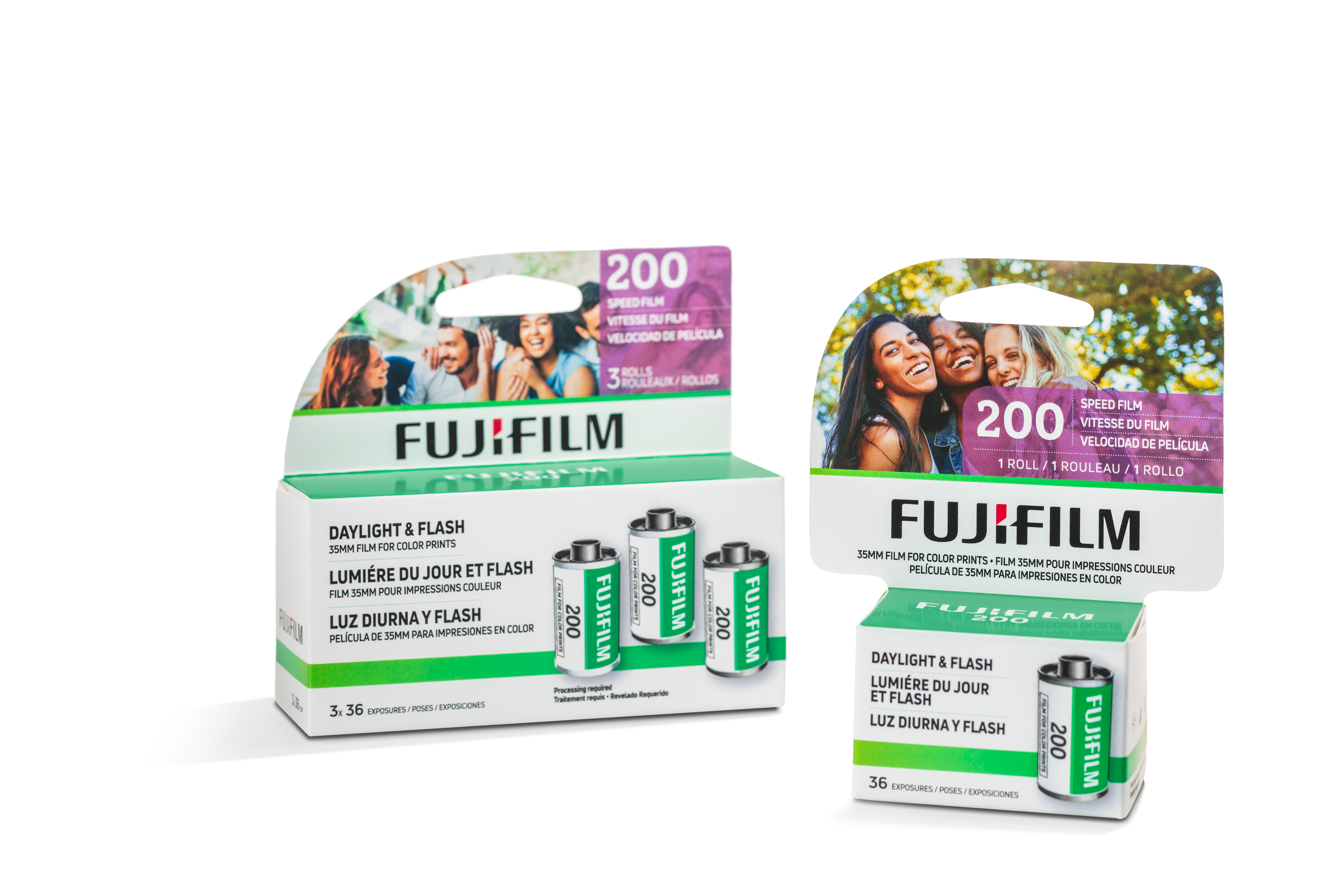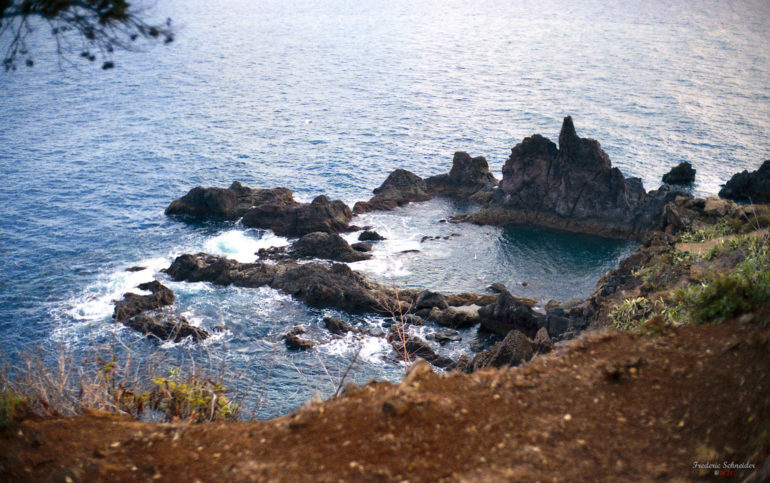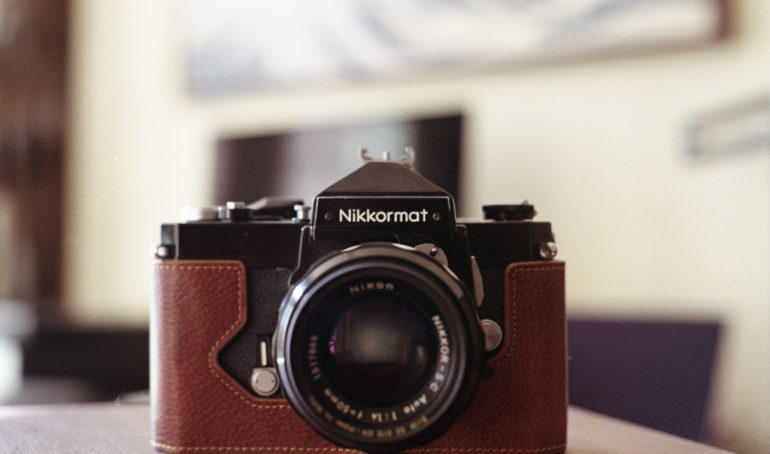All of this is a bit odd, for sure. Last December, Fujifilm quietly announced their new Fujifilm 200 ISO film. It received updated packaging, and on the surface seems like a really cool thing. But there have been murmurs on the internet. It was discovered by looking at technical charts that it exhibits a range similar to a, ahem, competing film. So we reached out to Fujifilm to ask what’s going on.
You can view this article and much more with minimal banner ads in our brand new app for iOS, iPadOS, and Android. And for $24.99/year, you can have a banner ad-free experience.
Fujifilm’s Statement on Fujifilm 200 Film
Photo by Charbel Kamal. Used with Creative Commons Permission.
Let me start off by saying that I wasn’t even aware a new film had come out from Fujifilm. For the record, I never read other blogs because I strive to keep us super original. So most of the time I’m clueless. When I asked Fujifilm why they hadn’t reached out, it was because they didn’t release a formalized press announcement on this.
I asked about the technical specs, packaging, and any other details that they could share. I did this while not having any idea of the controversy online. However, there are claims that it’s the same film as Kodak Gold 200. This was discovered by Reddit. And so I asked Fujifilm about it as wel.
Photo by fs999. Used with Creative Commons Permission.
Below is Fujifilm’s official statement on Fujifilm 200 film:
With the welcome shift in market demand for color film driven by younger generations (i.e., GenZ/Millennials) discovering, and revitalizing film photography, Fujifilm is pleased to have introduced in December 2021 the updated release of “FUJIFILM 200” (ISO200 color film) in single roll and three packs.
To address the new target audience for consumer film, Fujifilm has updated the packaging of the film to appeal to the Gen Z/Millennial audience. The new product packaging includes friends celebrating and having fun – situations to use film to capture the everyday moments.
Fujifilm works with a pool of valued partners around the world as part of the production process to ensure we can continue to deliver high-quality imaging products to delight customers.
Fujifilm is pleased to continue the legacy of analog photography and film so all generations can experience the joy of photography.
– Christine Jackman, Director, Corporate Communications, FUJIFILM Holdings America Corporation
I pressed Fujifilm a bit, but all Christine could say was, “We are unable to share the changes to the emulsion due to confidentiality, but we are pleased to share that we will deliver FUJIFILM 200 (ISO200 color film) that will have the quality that Fujifilm consumers are accustomed to.” As a journalist, this is odd because Fujifilm was super transparent about everything they did with Acros II. So in my mind, I’m hypothesizing that it is indeed Kodak Gold. If it wasn’t Kodak Gold, they’d flat out say it wasn’t.
The film is only available in 35mm. Beyond that, Fujifilm’s dealers and retailers will set the price. The MSRP for FUJIFILM 200 single roll is $6.99 and $18.99 for a three-pack.
Honestly, I Don’t Care. And You Shouldn’t Either
Photo by McMac70 used with Creative Commons Permission.
Here is a big, dirty secret in the photography world: there’s a lot of recycling. Look at a few competing photo blogs for a good idea. Then consider Nikon, Panasonic, Leica, Canon, Sigma, and others sometimes use Sony sensors in their cameras. Granted, Canon does it in some of their point and shoots. Camera companies will often say things like, “We’re not saying where the sensor is from,” which to us, means Sony made it. The same thing is done with lenses: there are maybe three companies that make all the optics for all camera companies. And then there’s the questionable new Nikon 28-75mm f2.8 lens.
That’s digital photography. But it happens in film photography too. Years ago, a General Manager at Lomography told me that a lot of their film is rebranded Kodak emulsions. There was a year where they literally sold a special Ferrania stock aged in wine barrels. Back in 2019, we published a guide to all the Lomography emulsions that were around. You can peruse them for yourself.
Photo by Tom Mills and used Creative Commons Permission
Further to the point, CineStill takes Kodak Movie film and removes the Remjet layer. SILBERSALZ35 literally takes Kodak movie film and cuts it for 35mm still cameras. Is it surprising that one of the big two is rebranding another film? Yes. Do I care? No. What I care more about is the fact that film is pretty expensive. People are going to buy less of it, and the labs are going to suffer as a result.
When I looked at Adorama’s website, Kodak 200 Gold film is pricier than the new Fujifilm 200 film. Last year, Kodak said that film prices would rise this year. That’s the sign of a recovering and healthier market. We’re also in a global pandemic and it’s very hard to get supplies of things. It’s why Fujifilm PRO 400 was discontinued.
Now here’s the truth: I don’t care. Kodak has long had an affordable film and now Fujifilm does. What’s more, both of these films are widely duplicated in various digital presets. I’m sure most of you couldn’t tell the difference between Kodak, Fujifilm, and a digital preset. Neither of these brands make a film that truly stands out from the pack. If you want a unique look then go for Lomography, CineStill, Sibersalz35, or Kono.
Want me to prove to you that you can’t tell the difference? Well, can you tell which photos in this blog post were shot on Kodak film? What about Fujifilm 200? You’ll have to click over to the attributions to see. But quite honestly, we’re sure it is too difficult. Many of you may have sat there and said, “Oh, look at those tones,” while not knowing what you were looking at.
I think we should all just be real here. If you like the film, go buy the film.






